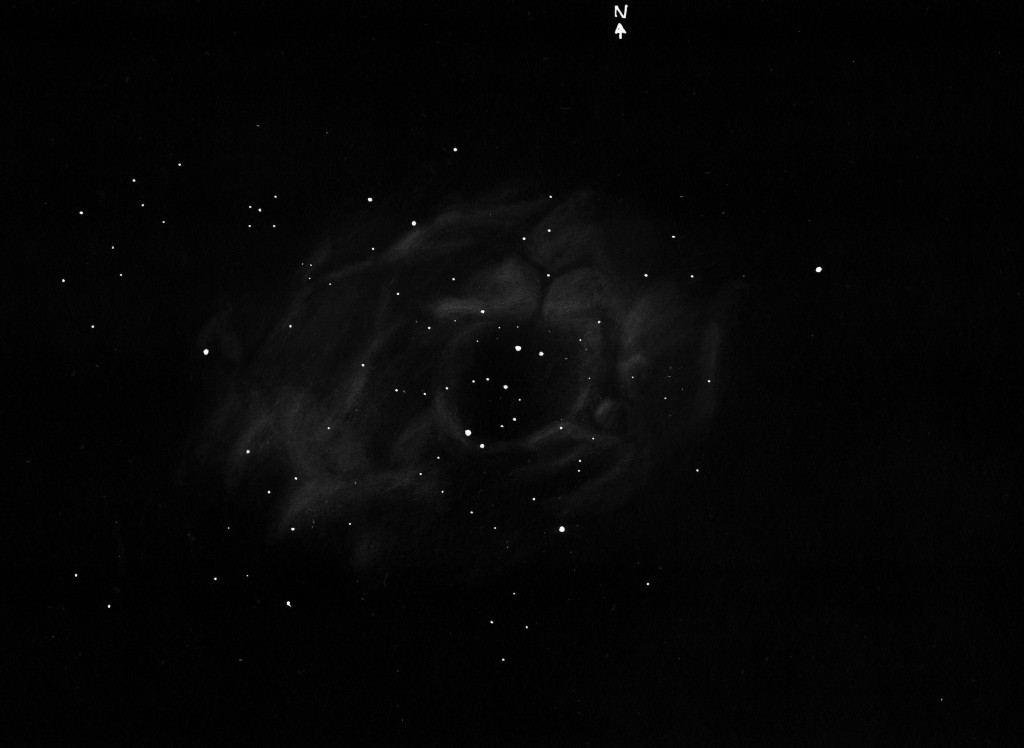
NGC 2237/39 Rosettennebel mit 16 Zoll
Ort: Kreuzleshöhe 1100m, Germany
GG: 6m5+
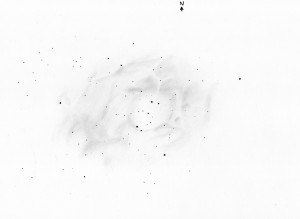
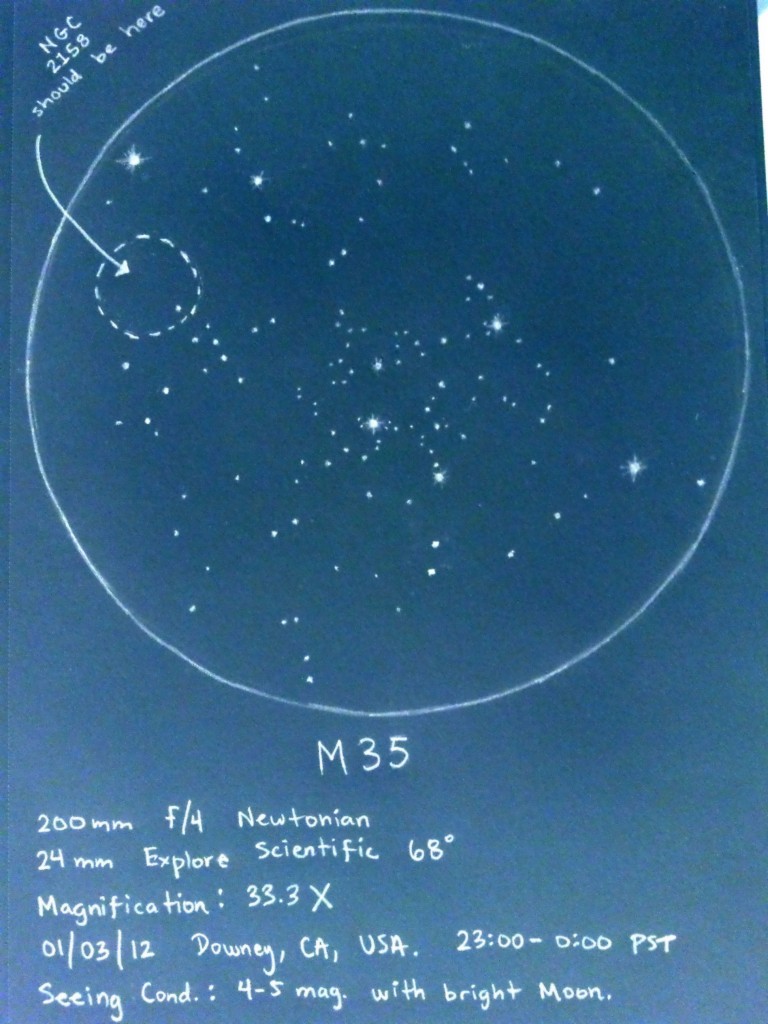
Object Name: Messier 35, NGC 2158
Object Type: Open Star Cluster
Location: Downey, CA, USA
Date: January 3, 2011. 23:00-0:00 PST.
Media: No. 2 pencil on White paper. Imaged and inverted on iPhone 4s. Second sketch ever.
Used: 200mm f/4 Astro-Tech Newtonian, with 24mm Explore Scientific 68-degree Argon Eyepiece, at 33.3X.
Seeing Conditions: 4 to 5 magnitude, with bright Moon. Was hoping to be able to see NGC 2158. But i guess that the Moon was a factor that night. I will try again on a moonless night and hopefully at least some fuzziness will appear for that little cluster.
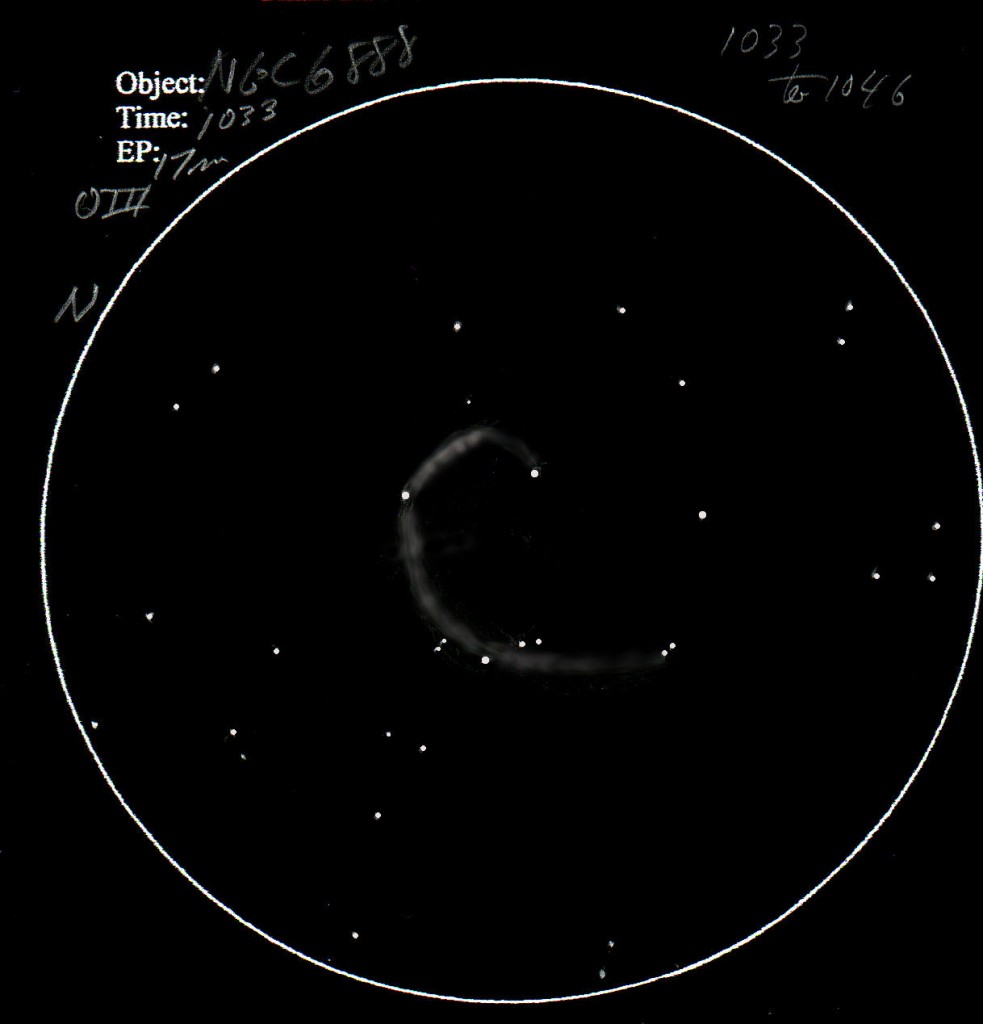
Object: NGC 6888 “The Crescent Nebula”
Object Type: Diffuse Nebula
Location: Orleans, Ont., Canada
Date: September 10 and 11
Media: graphite on white bond paper
I like hunting for challenging deep sky objects. Unfortunately, my backyard observing site is very light polluted so faint objects with low surface brightness are difficult at best. My log book is full of notes “failed to see Crescent Nebula”. But on the night of September 10, I did manage it to see it using my 12″ Skywatcher dob with a 17mm Hyperion (88x) and an OIII filter. The northern part was quite clear using averted vision but the southern part was more difficult. When I viewed this object again the following night (Sept 11) using higher magnification (115x) I was able to complete the crescent. A few nights later I was at a RASC star party in Cumberland, Ont., with much darker skies and I was able to confirm my observation.
Keep look up,
Gordon
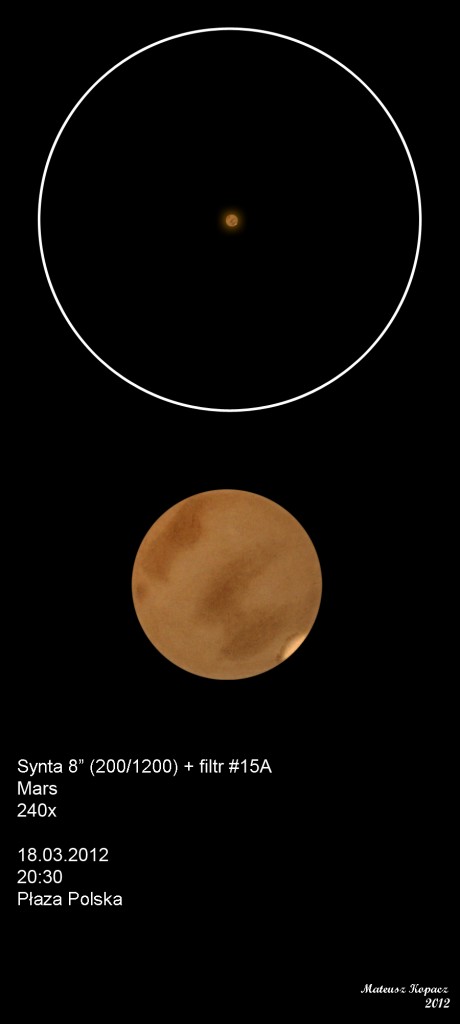
Hi everyone.
I’d like to present you my newest sketch of our Universe. It’s one of Solar System planets – Mars. It’s little small in this year opposition. It’s still beautiful, though. But the good seeing days have gone with coming of spring in Poland. I’m sure it was one of the last days with such a stable air before Mars will move away from Earth. So I decided to perpetuate the Roman god of war.
Object Name: Mars
Object Type: Planet
Location: Płaza, Poland
Date:18.03.2012
Media: graphite pencil, white paper, inverted in Photoshop CS2
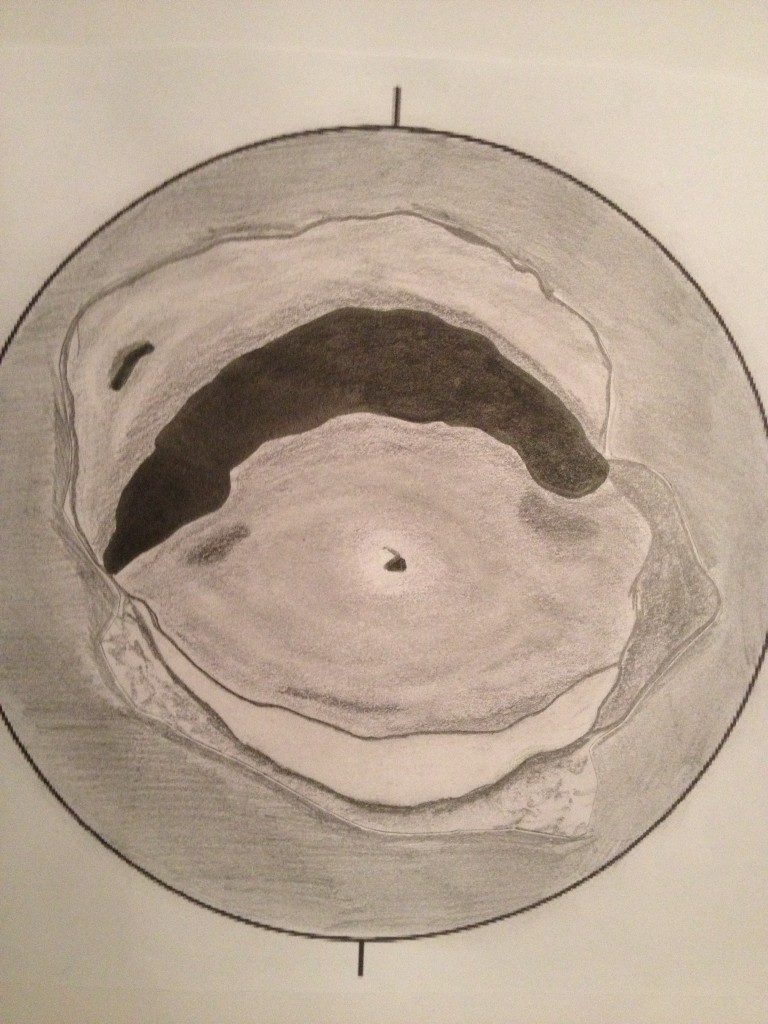
Title: Langrenus crater
My name: Silvia Fabi
Object name: Langrenus
Type: crater
Location: Ferrara
Date: 15/01/2013
Media: 6B and 2B pencil, white pastel
Seeing: II (Antoniadi scale)
Description: this crater is deep 2,7 Km and it has a diameter of 32 Km. Around the crater there are a lot of laudslapes and the walls are terraced. The central peak reflects a shadow on the floor of the crater.

Object Name M65, M66 and NGC 3628
Object Type three spiral galaxies
Location Budy Dłutowskie – small village in central Poland
Date 17.03.2012
Media graphite pencil, white paper, color invert
Telescope Columbus 320UL (320/1384 Newtonian) + Orion Q70 26mm
Seeing 4/5 (poor)
Transparency 4/5 (poor)
NELM 5,3 mag
This time I want to show you one of the most famous objects of spring sky – Leo Triplet. It is very easy to observe, even in medium binocular (15×70) but if you have 10” or bigger telescope you will catch really impressive views of all three galaxies even in medium weather conditions (fog, humidity – like I met during last weekend).
In M65 (with 13” mirror) you can observe mist with lighter core and outside spiral arms. NGC3628 looks like fog with long linear dust belt.
Clear Sky
Łukasz
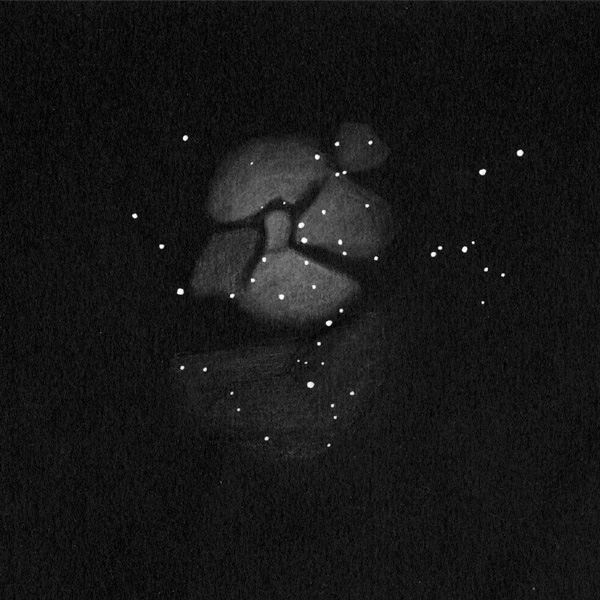
Object Name: M20, Trifid Nebula
Object Type: Galactic Nebula (emission, reflection and dark components)
Obeservation Location: Roque de Los Muchachos, La Palma
Date: 2. June 2011
Media: Chalk pencil on black paper
Observer: Christian Rausch
Telescope: 12inch/F5 Dobson (Hofheim Instruments)
Conditions:
– SQML = 21,7 mag/arcsec*2, seeing good, Temp. +14C, dry
– V=114x (Nagler 13mm)
The Roque de los Muchachos, La Palma, is one of the best places to observe the night sky and main base of the European Northern Observatory.
It took me quite some time to get the sketch, I’ve never seen so much detail within this object before. The sky at the app. 2400m high volcano is amazing, in a few weeks I’ll return there with 2 friends.
This time we’ll also have a 20 inch telescope….
Best Regards
Christian
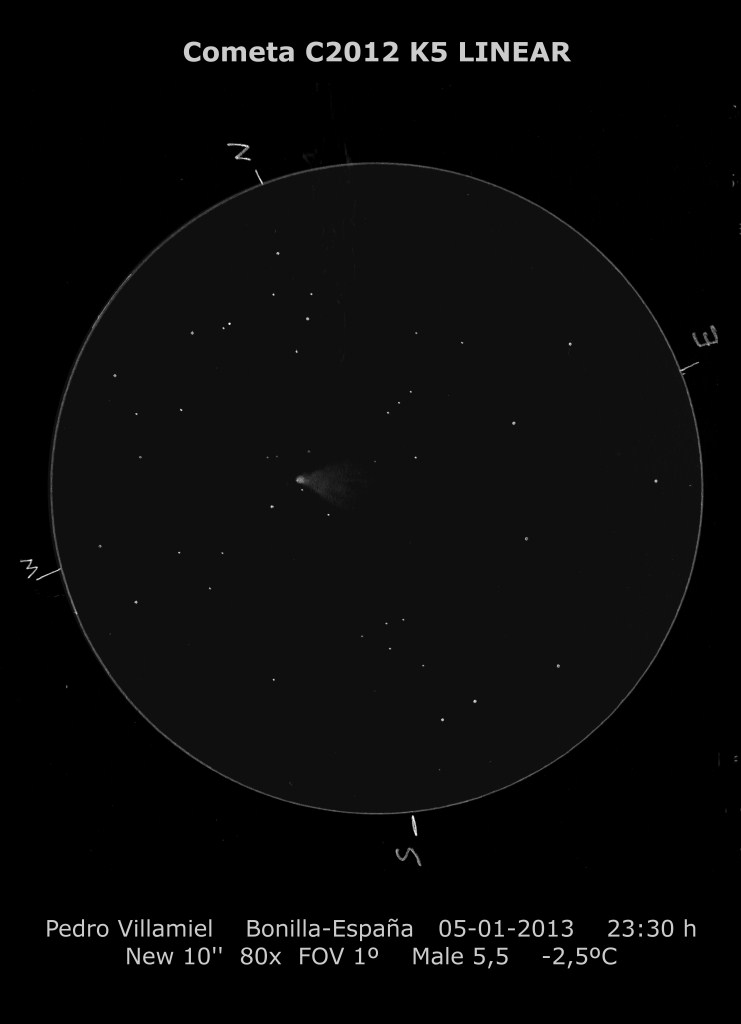
• Object Name: C2012 K5 LINEAR
• Object Type: Comet
• Location: Bonilla Spain
• Date: 01/05/2013
• Media: Graphite Pencil HB 2, torchon 1 and 130g drawing sheet
• inverted colors with GIMP 2.8
Observation notes: New 10” dob telescope. Object Elevation +68 º. Male 5,5. -2º C. Moisture 70 º/º.
Greetings to all visitors of this page.
PVG. Alcorcon, Madrid 01/15/2013
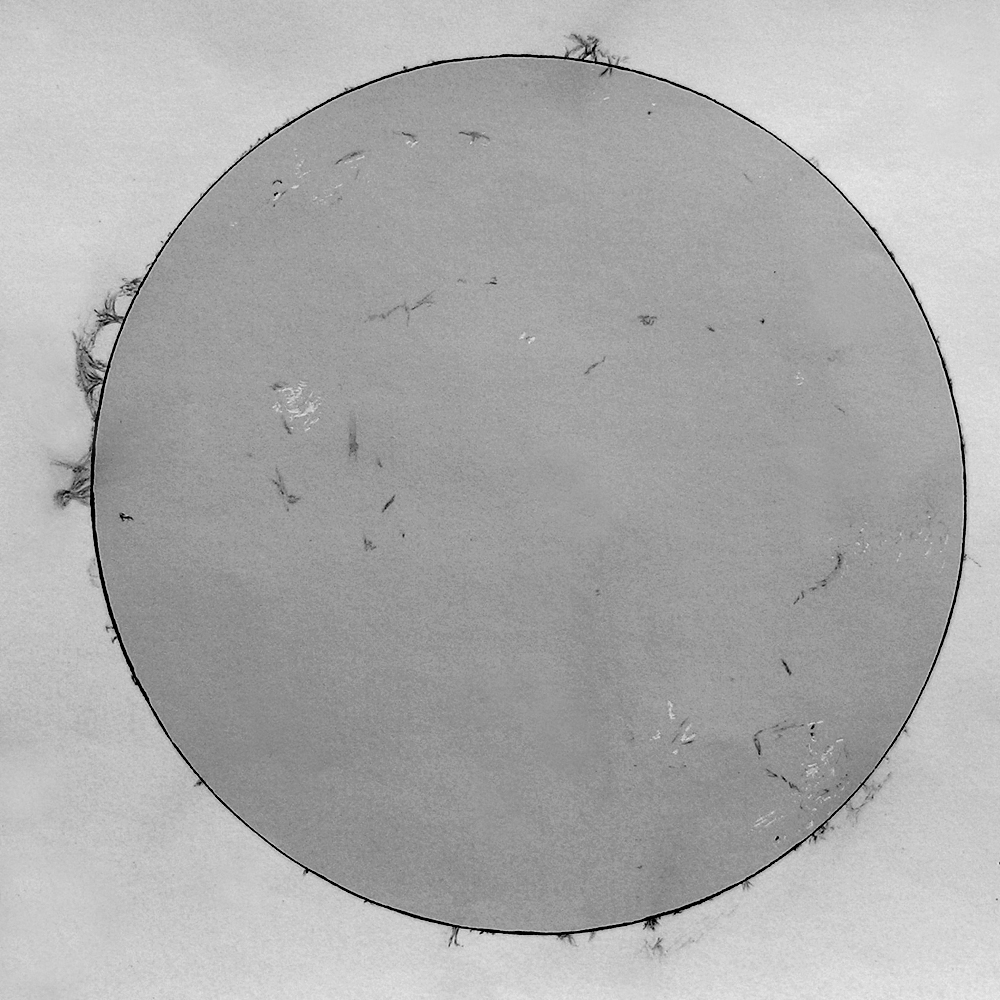
Hello,
I send you my latest h-alpha-sundrawing from 23.01.2013. I send you the positive and the negative version of my drawing.
Object Name: Sun
Object Type: Star
Location: Freising-Lerchenfeld, Bavaria, Germany
Date: January 23, 2013
Media: graphite pencil, knife, digital tools (Minolta Dimage Z2 Camera)
Time: 13:45 – 15:00 MEZ
Telescope: Coronado PST (40/400mm)
Ocular: 9mm SW
I use a drawing pattern with lightgray sun. I draw the prominences, sunspots and filaments with graphite pencil. For the active regions and flares i use the knife to scrape the gray color off. On this away I can hold finest details.
You can find more of my sundrawings on my website: www.dersonnenzeichner.de
Kind regards,
Michael Wendl
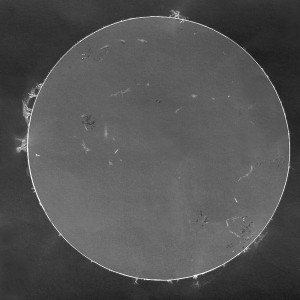
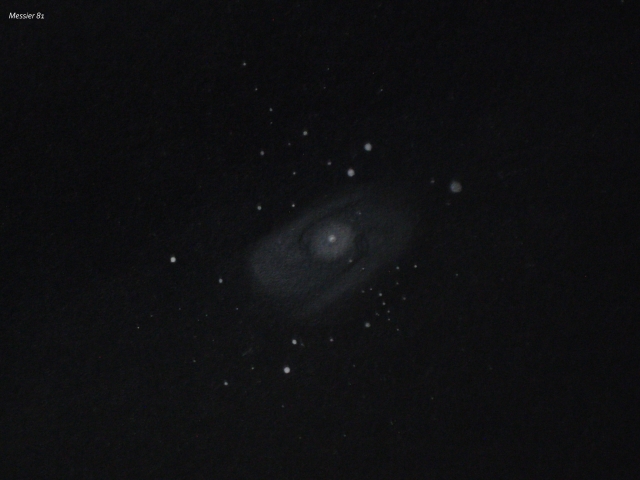

Date: February 25th, 2012
Location: West Desert, Utah
Time: 07:15 UT and 07:45 UT approx.
Equipment: XX14i, 10mm, 5mm Pentax XW;
Conditions: Antoniadi I
Objects: Messier 81 & 82, Spiral Galaxies in Ursa Major
Sketches done using the Mellish Method with the contrast adjusted in GIMP.
Two of my last several objects of this night were M81 and M82 in Ursa Major. I included them because of the Light Pollution versus Dark Sky comparisons I am wanting to do. Now I just need to the sky to cooperate at home! Nothing but snow that melts the next day and clouds since. M82, Bode’s Galaxy in Ursa Major. Pretty close to spot on how I saw it.